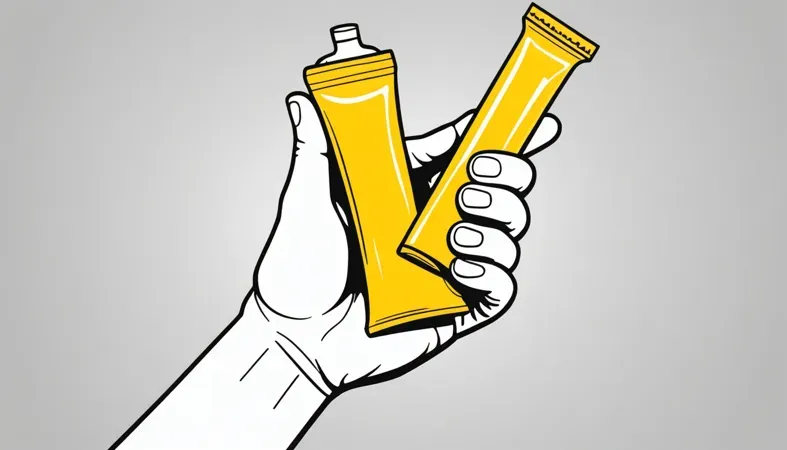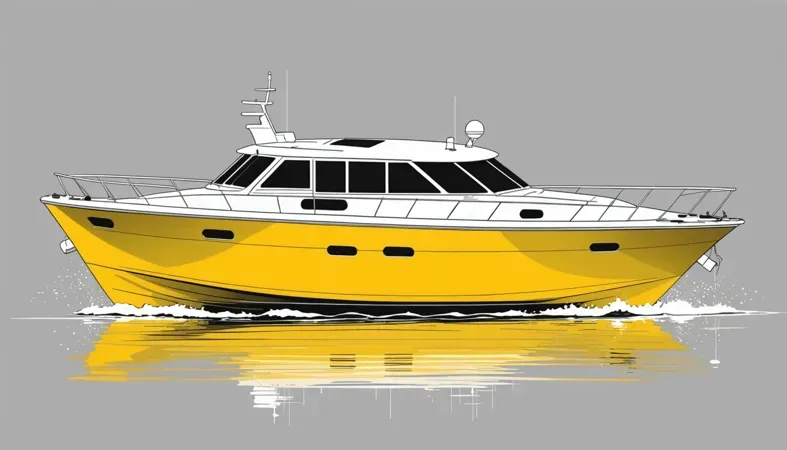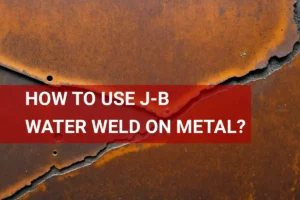How to Use JB Water Weld? A Guide to Application, Types, and FAQs
Published on: January 15, 2025 | Last modified: March 4, 2025
By: Mark Carter
JB Water Weld is a powerful epoxy putty, designed for repairs on wet surfaces. It can bond, fill, and seal almost anything and works well in high-pressure environments.
So, how to use jb water weld? It’s crucial to follow the right steps for effective application. In my experience, rushing the process often leads to weak bonds, so take your time to prepare surfaces properly.
In this guide, you’ll learn about JB Water Weld, different types available, steps to apply it effectively, factors that impact its usage, and answers to frequently asked questions. Whether you’re curious about how to apply JB Water Weld or wondering if it can be used underwater, we’ve got you covered.
Contents
How to Use JB Water Weld?
JB Water Weld is a strong epoxy putty for repairs. To use JB Water Weld, mix equal parts of the two components, apply within 30 minutes, and cure for 2 hours. It’s user-friendly for plumbing and marine fixes.
What is JB Water Weld?
JB Water Weld is a two-part epoxy compound designed for underwater repairs and insulation. It cures in about 4-6 hours at room temperature. This tough resin withstands temperatures up to 150°C (300°F) and is waterproof once set. With a tensile strength of about 3,050 psi (21 Mpa), it forms bonds strong enough to endure extreme conditions.
To use JB Water Weld, first prepare the surface by cleaning it thoroughly. Then, mix equal parts of the epoxy until uniform. A little patience pays off; taking time to mix properly leads to a stronger bond. It’s easy to mold and apply once well combined.
I once relied on it to repair a leaky pipe in my basement. It was a lifesaver; I applied it in just a few minutes and forgot about the leak. For those wondering how to apply JB Water Weld underwater, it’s simple—this product excels in wet environments, allowing you to seal leaks confidently. It bonds with the damp surface, providing a durable hold and preventing further damage.

Types Of JB Water Welds
What are the types of JB Water Welds? Let’s dive in!
-
Standard JB Water Weld
This versatile epoxy putty is for general repairs. Mix equal parts until it reaches a uniform color. Clean the surface, knead the putty for 30 seconds, and apply it to the damaged area.
-
JB Kwik Weld
This quick-curing epoxy sets in just 4-6 minutes. Scuff the surfaces and mix equal parts of resin and hardener. Press it into the crack or hole; it can hold up to 3,000 psi (About 20.7 Mpa).
-
JB Water Weld for Plastic
Designed specifically for bonding plastic materials. Shape a piece and press it onto the clean surface. Let it cure for about 1-2 hours before testing the bond.
-
JB High-temperature Water Weld
This type withstands high heat, making it ideal for automotive repairs. Clean the area, mix it, and press it firmly into place. It can handle temperatures up to 500°F (260°C).
-
JB Epoxy Water Weld
This product is great for waterproof repairs. Mix the two components and apply within 5 minutes. It cures underwater, making it perfect for plumbing leaks.
We’ve wrapped up the different types of JB Water Welds here. Let us turn our attention to how to use JB Water Weld.
Steps to Use JB Water Weld
Here are the steps to use JB Water Weld effectively. Follow them for the best results.
-
Prepare the Surface
Clean the surface thoroughly with a wire brush or sandpaper to remove rust, dirt, or grease. The optimal surface temperature is between 18°C and 29°C (65°F and 85°F). A clean surface ensures a strong bond, which is crucial for performance.
Dry surfaces work best, so ensure there’s no moisture, as it weakens adhesion. For metal, roughening the surface provides better grip.
-
Mix the Water Weld
Take equal parts of JB Water Weld, typically around 15.875 grams (0.56 Ounces) of each. Knead them together until you achieve a uniform color, which takes about 1 to 2 minutes. A uniform mix is crucial; inconsistent mixing leads to weak repairs. Mastering the technique of joining uphill can significantly improve repair strength in challenging positions, which involves learning how to weld uphill.
Note the curing time on the packaging, typically 4 to 6 hours for a solid bond, but you can handle it in 1 hour. Mix only what you can use within this timeframe to avoid waste. If you mix too much, it hardens before use.
-
Apply the Mixture
Spread the mixed JB Water Weld onto the cleaned surface. Use a putty knife or your gloved finger to apply pressure and ensure good contact. A thickness of around 3 to 6 millimeters (1/8 to 1/4 Inch) is ideal. Pay attention to grooves or cracks, ensuring they’re filled adequately. For a comprehensive overview of techniques such as welding various metals, explore the essentials of sheet metal welding.
While there’s no perfect way to smooth it, aim for a smoother finish. If applying underwater, ensure the surface is clean, and use your fingers to shape it. I’ve found circular motions help achieve an even coat.
-
Shape and Smooth
You may want to shape the mixture while it’s still pliable, usually within the first few minutes. Wet your tool with water for a smoother finish. For a better result, you can run a damp sponge over the wedge to smooth it out further.
Let it sit for about 30 minutes before curing to assist with shaping. Rushing may result in ugly dimples. Use your judgment—sometimes perfection comes with practice.
-
Allow to Cure
Let the JB Water Weld set and cure for about 4 to 6 hours for a full cure. Avoid applying stress during this time, as the bond strengthens significantly. For underwater applications, curing may take up to 72 hours in some conditions.
Check the instructions for any special conditions. Give it extra time if unsure. If it’s still tacky, be patient! Testing it before curing can ruin your work.
You should now have a good understanding of applying and preparing JB Water Weld. In the next part, we’ll discuss its uses.
Applications of JB Water Weld
JB Water Weld isn’t just for leaks! Check out these unique applications.
| Application | Details | Usage Tips |
|---|---|---|
| Pipe Repairs | Perfect for sealing both plastic and metal pipes. Ideal for quick fixes. | Make sure to clean and dry the area thoroughly before applying. |
| Marine Repairs | Excellent for fixing boats and pool leaks. Withstands underwater pressure. | Apply firmly and mold it into shape immediately for best results. |
| Automotive Applications | Use to repair radiators or fuel tanks temporarily. Heat resistant. | Allow longer curing times when exposed to accelerated heat. |
| Electronic Repairs | Can be used to seal and protect electrical components from moisture. | Ensure the surface is free from grease and dirt. |
| Home Repairs | Fill gaps in walls, or repair broken furniture and fixtures. | Smooth it out with a damp tool for a clean finish. |
So far we covered the uses of JB Water Weld. Let’s look at the factors influencing its effectiveness next.

Factors Affecting JB Water Weld Usage
What factors impact the effectiveness of JB Water Weld? Here’s a breakdown.
-
Temperature Of the Environment
The ideal temperature for applying JB Water Weld is between 50°F and 90°F (10°C and 32°C). Outside this range, the curing process slows down, which leads to weaker bonds.
-
Type Of Material Being Bonded
JB Water Weld bonds various materials, including metal, wood, and ceramics. However, some plastics may not adhere well. It’s critical to match the JB Weld type with the material for the best results.
-
Surface Preparation Quality
Clean surfaces promote better adhesion. Remove dirt, grease, or moisture before application, and rough surfaces enhance bonding. This step is crucial; even minor residue can compromise the final result.
-
Humidity Levels
High humidity can interfere with the curing process of JB Water Weld. It’s best to apply it in dry conditions; humidity above 70% can lead to weaker bonds.
-
Curing Time
JB Water Weld typically sets in 4 to 6 hours but can take up to 24 hours to reach full strength. Rushing this process can cause bond failures under stress.
We covered the elements influencing JB Water Weld usage. We will now cover common questions and answers related to it.
Frequently Asked Questions (FAQs)
Here are some common questions I typically get asked about JB Water Weld.
How Long Does It Take for JB Water Weld to Harden?
JB Water Weld takes about 4 to 6 hours to harden fully. The setting time might vary depending on the temperature and humidity, but it usually reaches its complete strength within 15 to 24 hours.
What’s the Difference Between JB Weld and JB Water Weld?
JB Weld is an epoxy adhesive while JB Water Weld is a specialized epoxy putty designed to work in wet conditions. JB Water Weld is best for repairing plumbing leaks and can bond underwater, making it unique in scenarios where moisture is present.
If you’re curious about joining metal using high heat, explore more about the fundamentals of forge welding.
Will JB Weld Stop a Water Leak?
Yes, JB Water Weld will effectively stop a water leak. Once cured, it can withstand pressure up to 1,000 psi (69 Bar), making it reliable for plumbing repairs and other water-related issues.
Can JB Water Weld Be Applied Underwater?
Yes, JB Water Weld can be applied underwater. This feature makes it perfect for fixing pool leaks or underwater plumbing problems without needing to drain the water first.
How Do You Remove JB Water Weld?
To remove JB Water Weld, you can use a sharp chisel or grinder for tough spots. However, it’s crucial to scrape gently; complete removal might require a significant force due to its strong bond.
How Does JB Water Weld Work?
JB Water Weld works through a chemical reaction between resin and hardener that creates a solid bond. Once mixed and kneaded, the two-part epoxy forms a durable and water-resistant seal upon curing.
Conclusion
That brings us to the end of our discussion on how to use JB Water Weld. We covered what JB Water Weld is, types of JB Water Welds, steps to apply JB Water Weld, factors affecting its usage, and answered some frequently asked questions. Each of these points helps you understand the product better and how to make it work for you.
So, how to use JB Water Weld? Simply mix it, apply it directly on the surface, and let it cure for at least 24 hours. You can even apply it underwater, making it ideal for repairs in wet areas. Wishing you success in your welding projects as you use JB Water Weld effectively.
For additional guidance on welding techniques and best practices, be sure to check out What is Welding.
Additional Reading
- American Welding Society. (2015). AWS D1.1/D1.1M: Structural Welding Code – Steel. Miami, FL: AWS.
- Lincoln Electric. (2020). The Procedure Handbook of Arc Welding (15th ed.). Cleveland, OH: Lincoln Electric Company.
Mark is a skilled welding engineer specializing in advanced metal joining technologies and process design. With a formal education in welding engineering and a background rooted in practical experience, Mark bridges the gap between theory and application. He is passionate about making technical concepts accessible, empowering welders to embrace innovation while mastering essential skills. Mark combines his scientific expertise with a commitment to supporting the welding community alongside his uncle, Joe.
Adhesives, American Welding Society, Epoxy Putty, Home Repairs, JB Water Weld, Plumbing Repairs, Surface Preparation, Underwater Repairs, Welding, Welding Techniques







